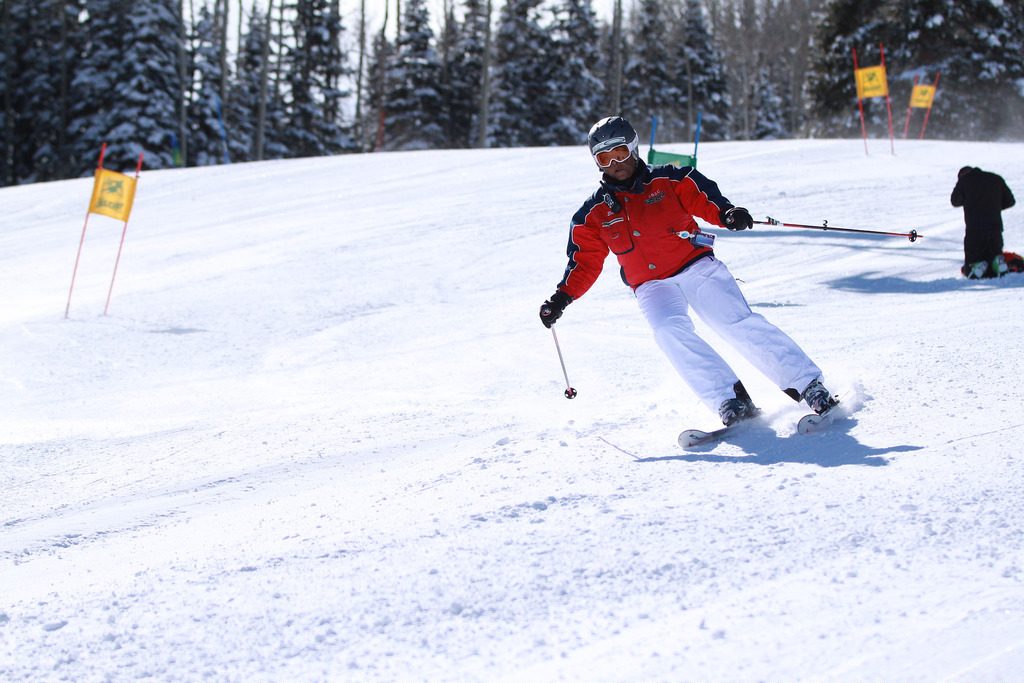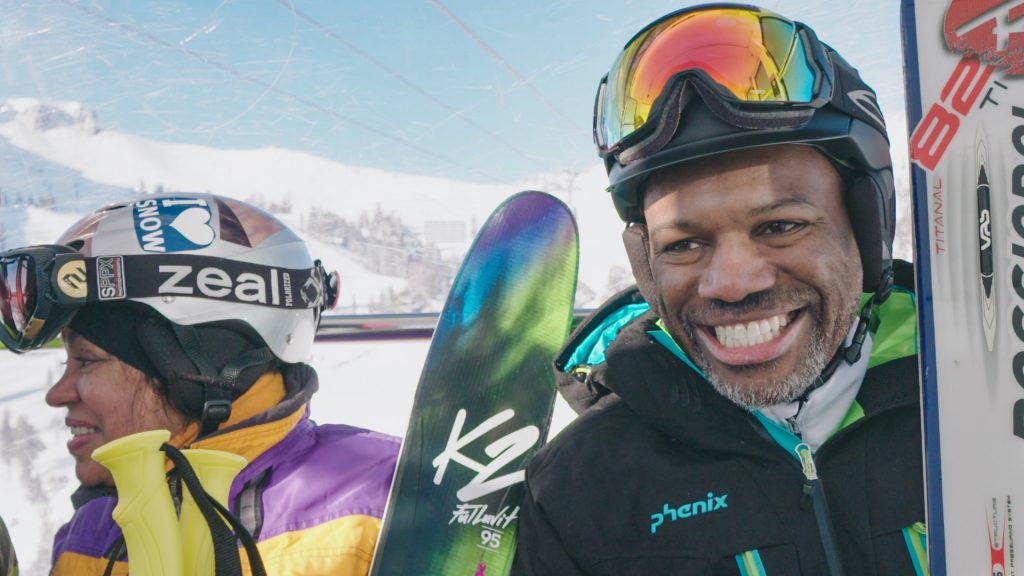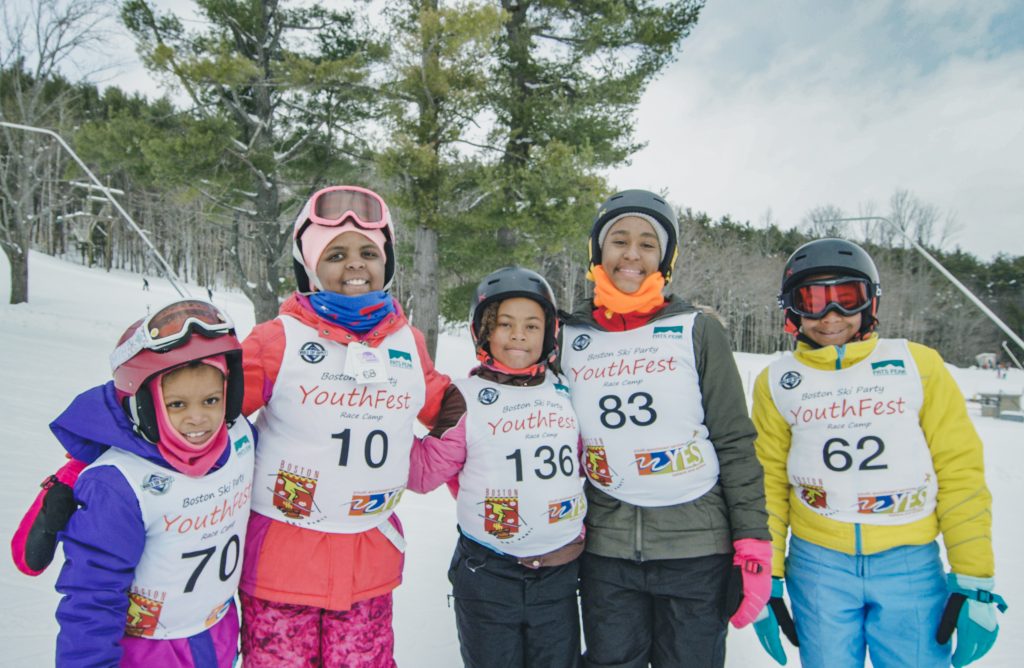REI PRESENTS: BROTHERHOOD OF SKIING
//
In 1973, when Art Clay and Ben Finley organized the first known gathering of Black skiers at an event in Aspen, Colorado, they couldn’t have known then that their organization would eventually become one of America’s largest ski clubs, which is still going strong today, 46 years later. The purpose of that first gathering, according to Finley, was to “identify and discuss problems and subjects which were unique to the Black skiing population, ski and socialize.”
Of course, the National Brotherhood of Skiers (NBS), as it would later be called, has had its ups and downs over the years. During its heyday in the late ’80s and early ’90s, the NBS had almost 80 clubs nationwide, according to NPS President Peggie Allen. In 1993, attendance at the NBS’ annual Black Summit, held in Vail that year, was 6,000 skiers strong. A couple of decades later, however, club numbers are down to just 53 groups across the U.S. Around 1,000 skiers and riders are expected at the March 2019 Black Summit in Steamboat Springs, Colorado.
Although participation in ski clubs nationwide is on the decline, NBS remains a vibrant and engaged community. And they’re recommitting to their long-term goal of introducing more people to winter sports to adapt to changing trends.

A skier from the Boston Ski Party takes to the slopes as part of the club’s community initiatives. (Photo Courtesy: Boston Ski Party)
The issue of replenishing membership and attracting younger, more diverse groups of people is at the forefront of virtually every conversation pertaining to the ski club industry, said National Ski Council Federation President Lisa Beregi. The federation, which was formed in 1999, consists of the 29 largest ski councils (or groups of clubs) in the country, including the NBS. Since the inception of these clubs, many of which were founded before the turn of the century, there hasn’t been another wave of skiers to fill the aging club base, according to Beregi.
“Ski clubs started as a means of doing something with a group at a reasonable price,” said Beregi. “Today we still get reasonable prices for traveling as groups, but it’s all based on booking in advance and having numbers and commitments, and unfortunately people don’t always want to commit. They also don’t see the camaraderie, which is what the older generation finds to be the most important part of being involved in a club. We’re not sure how to instill that.”
With the advent of online booking and collective season passes like the Ikon Pass and Epic Pass, it’s little surprise that tech-savvy millennials are opting out of traditional ski clubs to book last-minute trips that fit their schedules and budgets. In the 2017-2018 National Ski Areas Association (NSAA) demographic survey, skiers aged 22 to 37 accounted for a quarter of all resort visits, nearly 10 percent more than visitation by baby boomers (which made up 14.8 percent), which is the generation most commonly associated with ski clubs.

Still, overall winter sports participation has slumped. According to data from NSAA, which has been keeping record since the 1978-1979 season, winter sports participation peaked in the winters of 2007-2008 and 2010-2011 with 60.5 million resort visits. Participation for the 2017-2018 season, by comparison, dropped by 11.9 percent with only 53.3 million visits.
NBS President Allen doesn’t claim to know how to stem the rising tide of disinterest in ski clubs, but she is optimistic that the consistent membership base of the NBS—which has held steady around 3,500 people over the past five years—is a sign of hope. Although the early years of the NBS focused intently on the first prong of the organization’s mission, “to identify, develop and support athletes of color who will win international … winter sports competitions representing the United States,” Allen is encouraging clubs to return their attention to the second, more universal, prong of that mission statement, to increase participation of people of color in winter sports.
In that department, the NBS is exceeding expectations. Club-run events such as YouthFest, organized by the Boston Ski Party, annually brings 140 kids to their local mountain, in an effort to introduce skiing and snowboarding to underserved children. To help make skiing more affordable, many clubs, including the Boston Ski Party, offer installment plans for membership dues and negotiate community days where any person, club-affiliated or not, can ski or ride for a discounted rate.

“Skiing has honestly helped in every aspect of my life. I’m grateful that I had the chance. It’s a beautiful sport,” said Kwesi Etienne, who grew up skiing at YouthFest. “I wish it was more accessible to everybody, but I guess that’s where our ski club comes in.”
Every year, the NBS awards four club scholarships specifically to introduce young adults to skiing or snowboarding. Then there’s the annual ski summit, complete with DJs, comedians, rappers, slopeside picnics and costume parties. The approach the NBS is taking is individualized and intentional, and it seems to be working.
According to the NSAA’s demographic study, the retention rate for adult first-time skiers who take a lesson ranges from 22 to 27 percent—meaning around a quarter of people who ski once come back to the sport for a second time. That number pales in comparison to the National Brotherhood of Skiers’ retention rate of 75 percent, according to former NBS Vice President and National Winter Activity Center founder and CEO Schone Malliet. Given that Snowsports Industries America and the Physical Activity Council have both found that having someone to recreate with—especially someone who shares their identities and life experiences—increases participation, it seems the community-minded NBS is better suited to survive, if not thrive, well into the future.
“It’s important to introduce not only underprivileged but underrepresented people to the mountain,” said Allen. “It’s not only good for our organization, but it’s good for the industry.”
Posted from REI Co-op via Facebook



